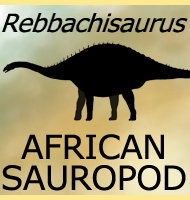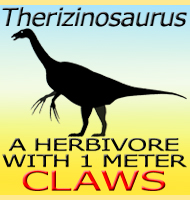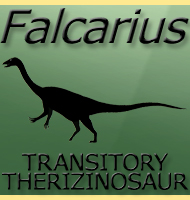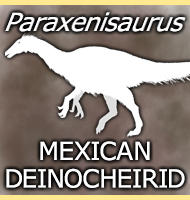


Paralitherizinosaurus

Name:
Paralitherizinosaurus
(Tidal scythe lizard).
Phonetic: Pa-ral-e-fer-e-ze-no-sor-us.
Named By: Yoshitsugu Kobayashi, Ryuji Takasaki,
Anthony R. Fiorillo, Tsogtbaatar Chinzorig & Yoshinori
Hikida - 2022.
Classification: Chordata, Dinosauria,
Saurischia, Theropoda, Therizinosauridae.
Species: P. japonicus
(type).
Diet: Herbivore.
Size: Uncertain due to lack of fossil remains.
Known locations: Japan - Osoushinai Formation.
Time period: Campanian of the Cretaceous.
Fossil representation: Partial post cranial remains
including bones from the hands, claws and a cervical (neck)
vertebra.
Fossils
of
this dinosaur were actually first mentioned in a scientific paper
published in 2008, but it would not be until 2022 that they
were formally described as a distinct genus. Paralitherizinosaurus is
a genus of therizinosaurid
dinosaur that lived in South East Asia
during the late Cretaceous. Although established upon the description
of just a few bone fossils, comparison to better preserved relative
genera allows us to infer that Paralitherizinosaurus was a bipedal
herbivore with very long claws on its hands. These claws may have
been aids to help Paralitherizinosaurus to feed.
Further reading
- A theropod dinosaur
(Saurischia: Maniraptora) from the Upper Cretaceous Yezo Group of
Hokkaido, Northern Japan. - Paleontological Research. 12
(4): 421–425. - Mizuki Murakami, Ren Hirayama, Yoshinori
Hikida & Hiromichi Hirano - 2008.
- New therizinosaurid
dinosaur from the marine Osoushinai Formation (Upper Cretaceous,
Japan) provides insight for function and evolution of therizinosaur
claws. - Scientific Reports. 12 (7207). - Yoshitsugu
Kobayashi, Ryuji Takasaki, Anthony R. Fiorillo, Tsogtbaatar
Chinzorig & Yoshinori Hikida - 2022.
----------------------------------------------------------------------------
Random favourites
 |
 |
 |
 |




